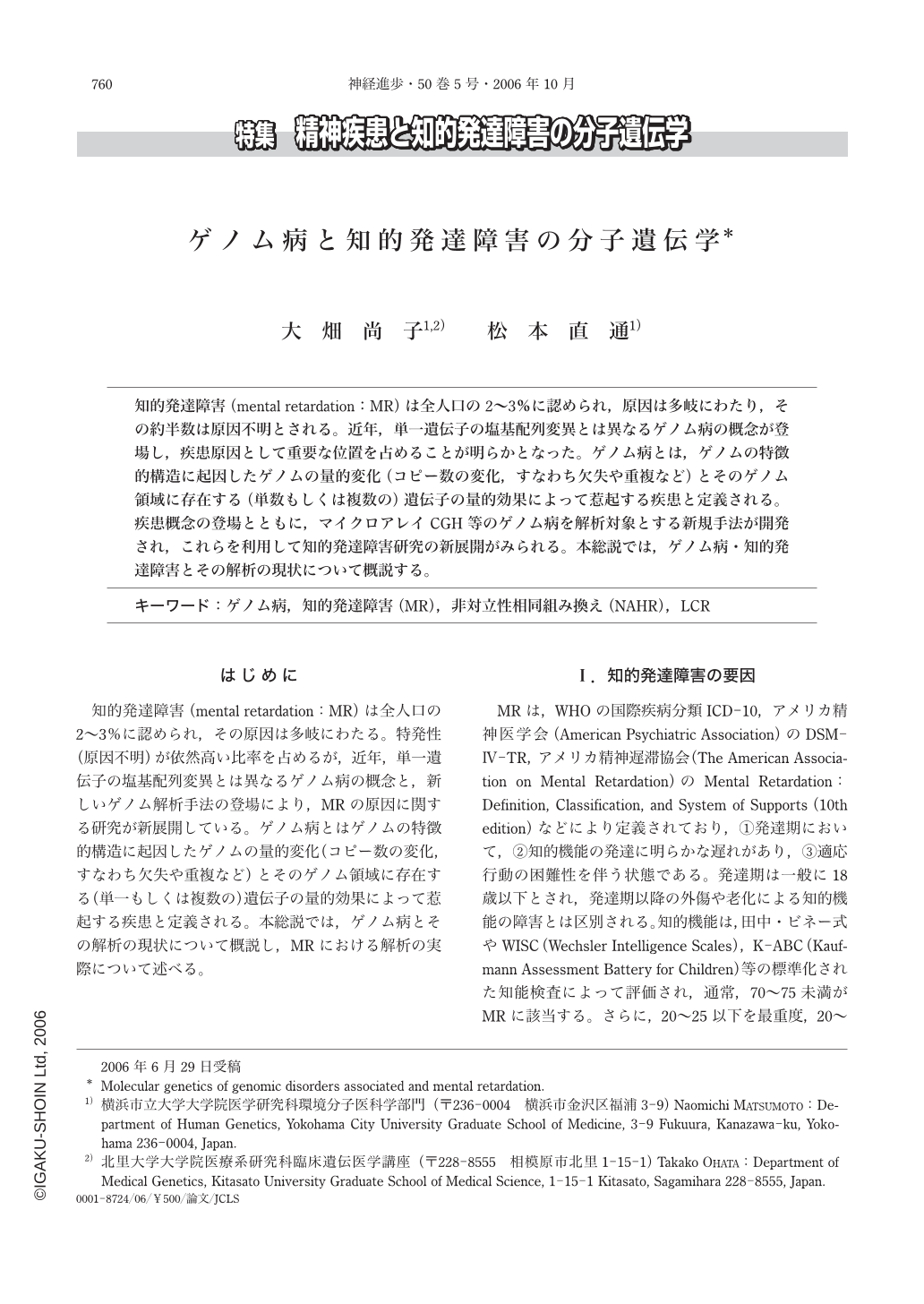Japanese
English
- 有料閲覧
- Abstract 文献概要
- 1ページ目 Look Inside
- 参考文献 Reference
知的発達障害(mental retardation:MR)は全人口の2~3%に認められ,原因は多岐にわたり,その約半数は原因不明とされる。近年,単一遺伝子の塩基配列変異とは異なるゲノム病の概念が登場し,疾患原因として重要な位置を占めることが明らかとなった。ゲノム病とは,ゲノムの特徴的構造に起因したゲノムの量的変化(コピー数の変化,すなわち欠失や重複など)とそのゲノム領域に存在する(単数もしくは複数の)遺伝子の量的効果によって惹起する疾患と定義される。疾患概念の登場とともに,マイクロアレイCGH等のゲノム病を解析対象とする新規手法が開発され,これらを利用して知的発達障害研究の新展開がみられる。本総説では,ゲノム病・知的発達障害とその解析の現状について概説する。
Mental retardation(MR)is found in 2-3% of general human population. Various genetic and environmental factors are supposed to cause MR, but approximately half of MR cases remain unexplained. Advent of understanding of genomic disorders as well as new technologies opened up a new landscape of MR etiology. Genomic disorder is defined as a disease that is caused by an alteration of the genome that results in complete loss, gain or disruption of the structural integrity of a dosage sensitive gene(s). In this article, genomic disorders and MR are briefly reviewed and new technologies such as microarray CGH used for MR researches are described.

Copyright © 2006, Igaku-Shoin Ltd. All rights reserved.


